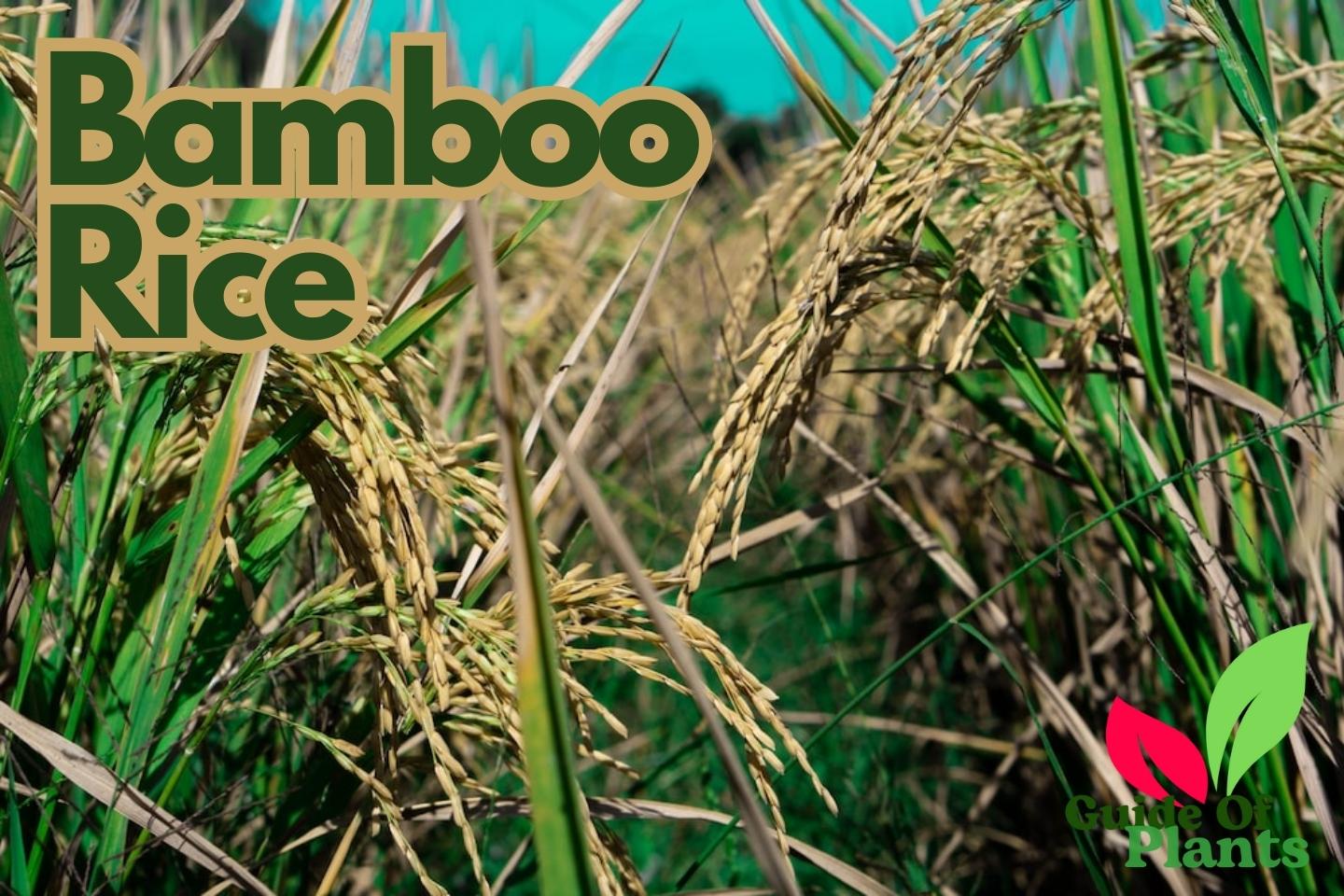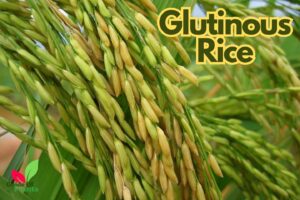With its nutty aroma, chewy texture, and sweet, earthy flavor, bamboo rice captivates rice aficionados across Asia. But what exactly is bamboo rice, and what makes it so special? This article uncovers the origins, cultivation, and benefits of this distinctive rice intertwined with bamboo tradition.
Our journey will explore how adept rice farmers leverage bamboo’s fast growth to produce this rice naturally and sustainably. We’ll also taste test some signature rice dishes and assess future prospects for this heirloom grain. Continue reading to gain an appreciation for bamboo rice and its enduring role in Asian food culture. Let’s know more about it with Guide of Plants.
Table of Contents
Also Know About:
What Is Bamboo Rice?
Bamboo rice, also known as bamboo sticky rice or just sticky rice. It is a short-grained rice that gets its name from its long, slender grains that resemble bamboo shoots. It has a very sticky texture when cooked due to its high starch content. Some key facts about bamboo rice:
- It is a type of short-grain rice variety commonly grown and eaten in East and Southeast Asia. The most popular varieties are from Thailand and Laos.
- It has a very chewy, sticky texture when cooked due to its high amylopectin starch content. This makes it ideal for dishes that require the rice to clump together and hold its shape.
- The raw grains are relatively long and slender compared to other short-grain rices. They look a bit like tiny bamboo shoots, hence the name “bamboo rice.”
- It is commonly used to make rice dishes like sticky rice desserts, rice balls, andstuffed leaf wraps. The stickiness allows it to bind ingredients together.
- It also has a subtle sweet, nutty flavor compared to regular long-grain white rice. Some varieties are aromatic like jasmine rice.
- Bamboo rice requires specific cooking techniques like soaking, steaming, or boiling instead of just boiling like regular rice. This allows the grains to remain intact and achieve the proper sticky texture.
- It is sometimes labeled as “sweet rice” or “glutinous rice” due to the stickiness, but it does not actually contain gluten.
This rice is a specialty sticky, chewy, short-grain rice perfect for Asian dishes that require rice that can clump together and hold its shape well. The name comes from its long grain appearance similar to bamboo shoots.
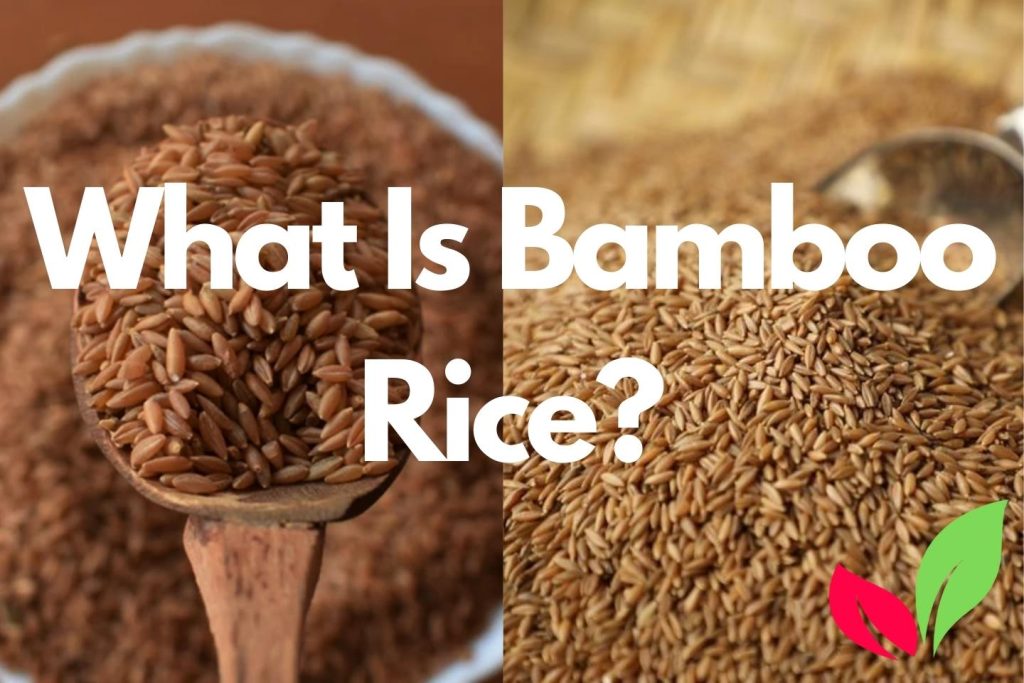
Also Know About: Miyazaki Mango Plant
History and Significance of Bamboo Rice
While most rice varieties can trace their domestication back thousands of years, this rice or “Zhu Li” in Chinese, has a slightly more recent yet equally fascinating story.
Cultivation of this rice began over 1,000 years ago in China’s Fujian province where bamboo forests were plentiful. The origins are reflected in its Chinese name which literally translates to “Bamboo Nursed Rice”.
China went on to establish bamboo rice as an esteemed ingredient tied to health and vitality. The sprouted grains were traditionally served to honor guests at important ceremonies.
Neighboring countries including Thailand, Taiwan, and the Philippines adopted this rice farming methods to produce similar local varieties. For instance, Thailand has the cherished heirloom bamboo sticky rice known as “Khao Lam”.
While still a niche product, this rice continues to hold cultural importance across Asia thanks to its distinctive properties.
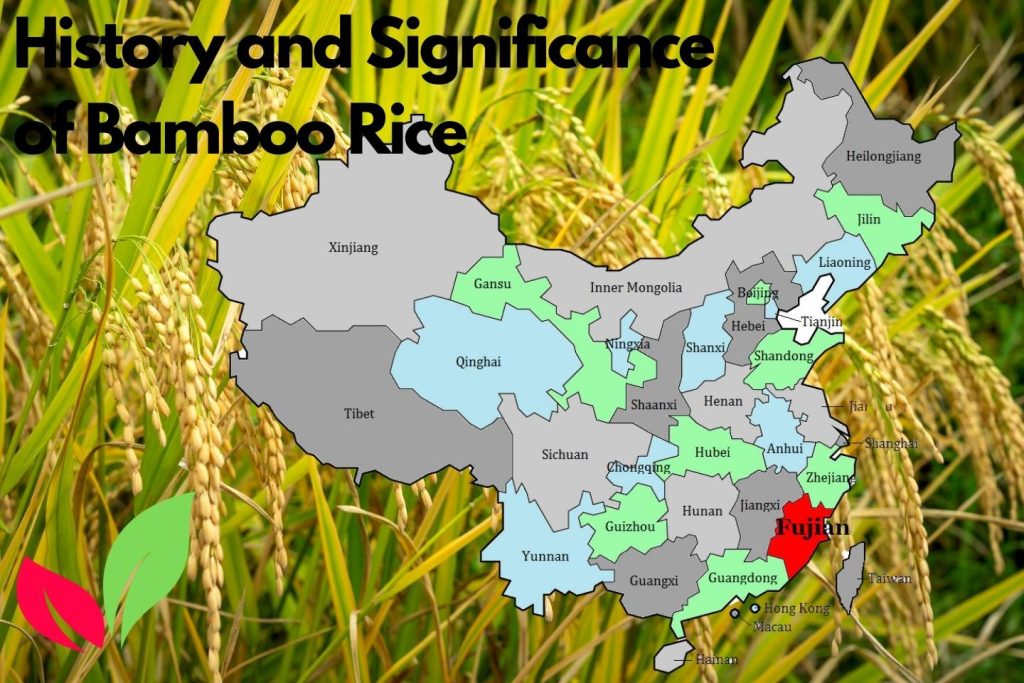
Health Benefits of Bamboo Rice
Several studies have shown the impressive nutritional profile of this rice. It contains fiber, antioxidants, essential amino acids, vitamins and minerals. Research indicates bamboo rice has anti-inflammatory, anti-diabetic and anti-cancer effects. The phytochemicals present may help reduce cholesterol and high blood pressure.
The fiber-rich bran layers in this rice help regulate digestion. The rice is a prebiotic that feeds probiotics or good bacteria in the gut for a healthy microbiome. A review paper in the International Journal of Molecular Sciences explained that the rice bran contains antioxidant phenolic acids that reduce oxidative stress and inflammation.
According to a study in the Journal of Ethnopharmacology, extracts of bambo rice can inhibit the spread and growth of certain cancer cells. The anti-cancer phytochemicals in bambo rice include tricin, ferulic acid and caffeic acid.
For diabetes patients, this rice can help stabilize blood sugar levels. The amylose starch in this rice gives it a lower glycemic index than white rice. A study published in the British Journal of Nutrition emphasized the benefits of this rice for diabetics due to its low glycemic impact.
The bran oil from this rice also contains gamma-oryzanol, an antioxidant that may boost heart health. Research indicates gamma-oryzanol can help reduce cholesterol absorption and lower triglycerides.
Bamboo rice emerges as a nourishing food that offers significant wellness advantages. With plenty of fiber, minerals, potent phytochemicals and antioxidants, this rice variety can potentially help fight inflammation, cancer, diabetes, heart disease and digestive problems. Having this rice into a balanced diet can promote better health and well-being.

How Bamboo Plants Nurture Rice
To grasp what distinguishes bamboo rice requires understanding the mutually beneficial relationship between bamboo and rice.
Bamboo Characteristics: Bamboos are giant grasses capable of extremely fast growth. Some species can grow over 3 feet in a single day. The plants develop strong culms (stems) and an extensive root network that rapidly generates biomass.
Rice Cultivation: Rice is typically grown as paddy rice in flooded paddies that provide moisture and control weeds. Rice benefits from nitrogen fertilizer to achieve high yields. Flooding helps make nitrogen accessible.
Symbiotic Relationship: For the rice, rice paddies are positioned next to dense bamboo groves. As bamboo culms reach maturity, farmers selectively cut and lay them into the rice paddy water. The decomposing bamboo biomass enriches the soil and water with abundant nitrogen and other nutrients essential for rice growth. By harnessing bamboo’s prolific growth, the need for nitrogen fertilizers is reduced through nature’s elegant solution.
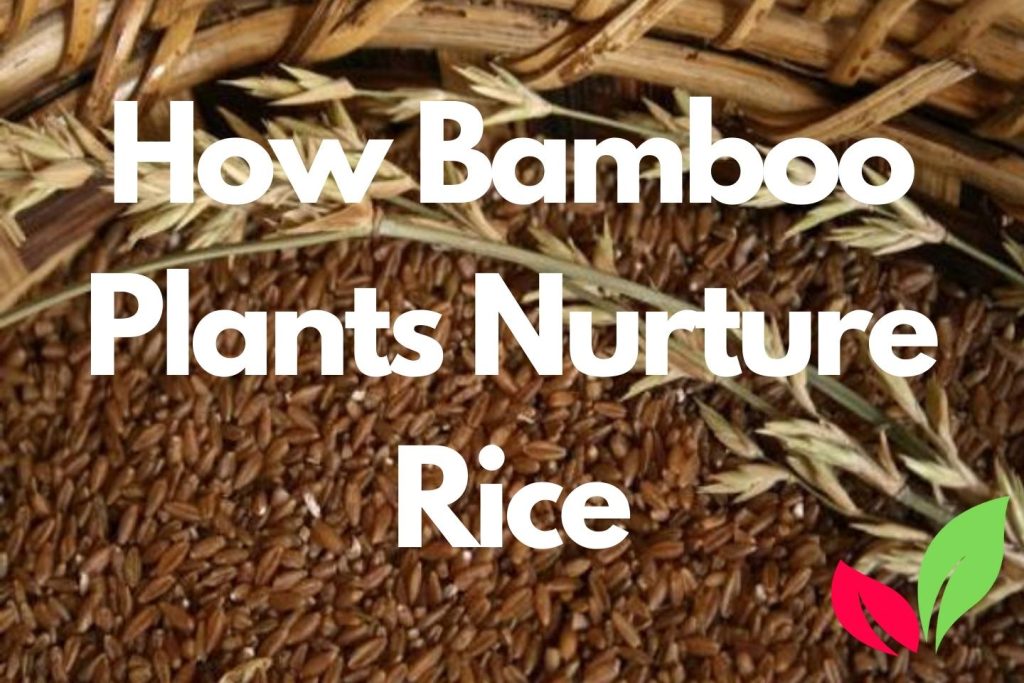
Cultivating Quality Bamboo for Rice Production
Producing excellent bamboo is the foundation for generating fertile nutrition to feed bamboo rice. Farmers pay close attention to bamboo selection, planting, care, and harvest practices in order to maximize biomass production.
Preferred Bamboo Species
Farmers select bamboo species like Moso, Mulin, and Makino bamboo that exhibit vigorous growth and extensive rhizome and shoot development. These varieties are perfect candidates for generating plentiful biomass to nourish rice. Moso bamboo in particular can achieve great heights over 50 feet tall and diameter over 7 inches in just a few years.
Planting and Care
- Bamboo rhizomes or cuttings are planted close together to form a dense grove. Partial shade is ideal in the first one to two years after planting to help young shoots establish.
- The bamboo stand must receive ample moisture delivered through rainfall, irrigation, or flooded paddies. Good drainage in the soil improves bamboo health.
- Mature bamboo requires large amounts of water and nutrients to sustain fast growth. Compost, manure or supplemental fertilizer are added to bamboo groves to boost nutrition.
- Allowing each new generation of culms to reach their full height and girth results in the greatest accumulation of carbon and nutrients to later transfer into the adjacent rice paddy. Proper spacing between poles prevents overcrowding.
Harvesting Bamboo Shoots
- New tender shoots are pruned early in spring to stimulate more to emerge. These crisp, tasty shoots can be eaten as a vegetable.
- Larger, woodier culms are selectively cut near their base when the rice crop requires fertilization. The ideal timing coincides with onset of rice planting season.
- Taller bamboo varieties like Moso take at least 4-7 years to fully mature before their first harvest. After an initial long wait, new culms rapidly regrow when appropriately cut.
- Only around 1/5 of culms are removed at a time to maintain an optimal balance of age diversity and nutrition for the bamboo-rice ecosystem.
Also Know About: Ficus Bonsai
Traditional and Modern Bamboo Rice Farming
While founded in age-old practices, bamboo rice production has evolved over the centuries:
Traditional Practices: Historically, rice paddies were situated adjacent to bamboo stands, sometimes encircled by bamboo. Farmers cut culms, crushed nodes, and placed sections into paddies to decompose for months before planting rice. Careful water management maintained ideal conditions for breakdown and nutrient release.
Modern Cultivation Methods: More efficient equipment like bamboo crushing machines prepares cut bamboo for faster nutrient cycling. Plastic lining in paddies better retains moisture and dissolved nutrients. Field testing and analysis helps fine-tune fertilization rates based on soil properties.
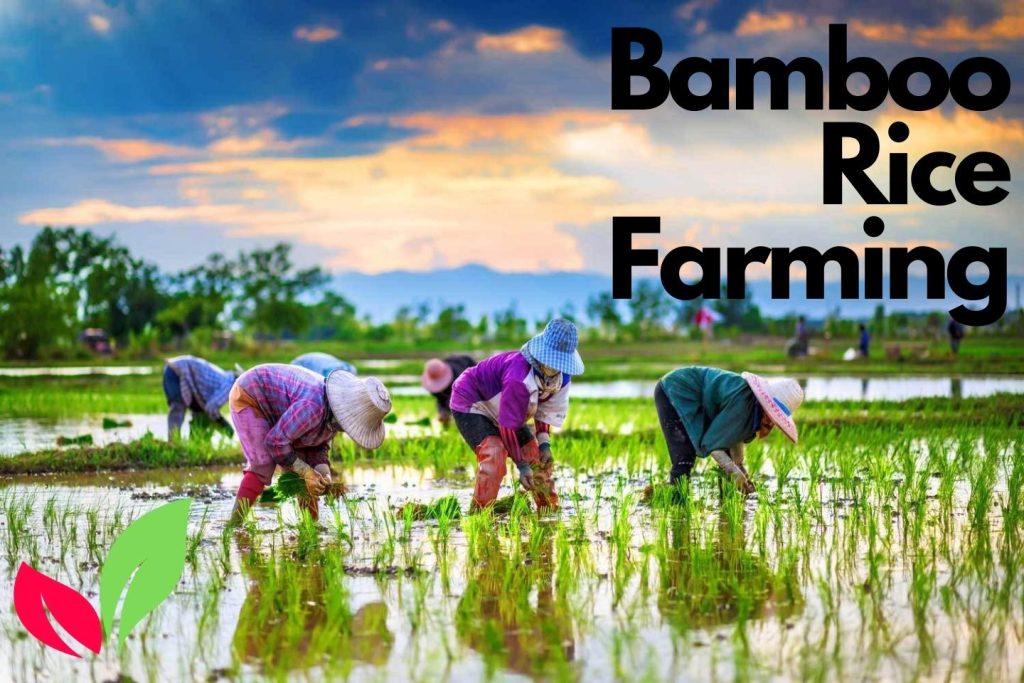
Unmasking Bamboo Rice’s Distinctive Properties
The unique ecology of bamboo rice expresses itself in the harvested grains:
Appearance and Texture: This rice grains are slightly bigger and wider compared to conventional rice. The grains are often asymmetric. Cooked form of this rice is sticky with a chewy, resilient texture and a tendency to clump together.
Fragrance and Taste: Fresh bambo rice emits a sweet, woodsy aroma reminiscent of bamboo. The scent grows stronger when cooked. Flavor is subtle yet complex, often described as nutty or popping. Sweetness and slight earthiness comes from compounds absorbed from bamboo.
Health Benefits and Nutrition: Bamboo rice delivers fiber, protein, vitamins, and minerals, especially high amounts of niacin, thiamine, and amino acids like gamma-aminobutyric acid (GABA). Anti-inflammatory and anti-oxidant activity may help the rice prevent or aid certain health conditions.
Signature Dishes Showcasing Bamboo Rice
Bamboo rice lends its captivating qualities to many Asian specialties:
Regional Cuisine Examples: Chinese bamboo sticky rice with chicken wrapped in lotus leaf. Thai khao lam – sticky rice with coconut milk cooked in bamboo. Filipino suman saibos – salty rice cakes cooked with coconut milk in bamboo stalks.
Recipes: The rice salad with peanuts, fresh herbs, chili-lime dressing. Sweet bambo rice dessert made with coconut milk, taro, and mango. Sushi with vinegar-seasoned bambo rice rolled with fish and vegetables.
Products: Some producers steam and dry rice then grind into nutritious gluten-free flour. Bamboo rice powder can be used to prepare porridge, breads, noodles, and even alcoholic beverages.
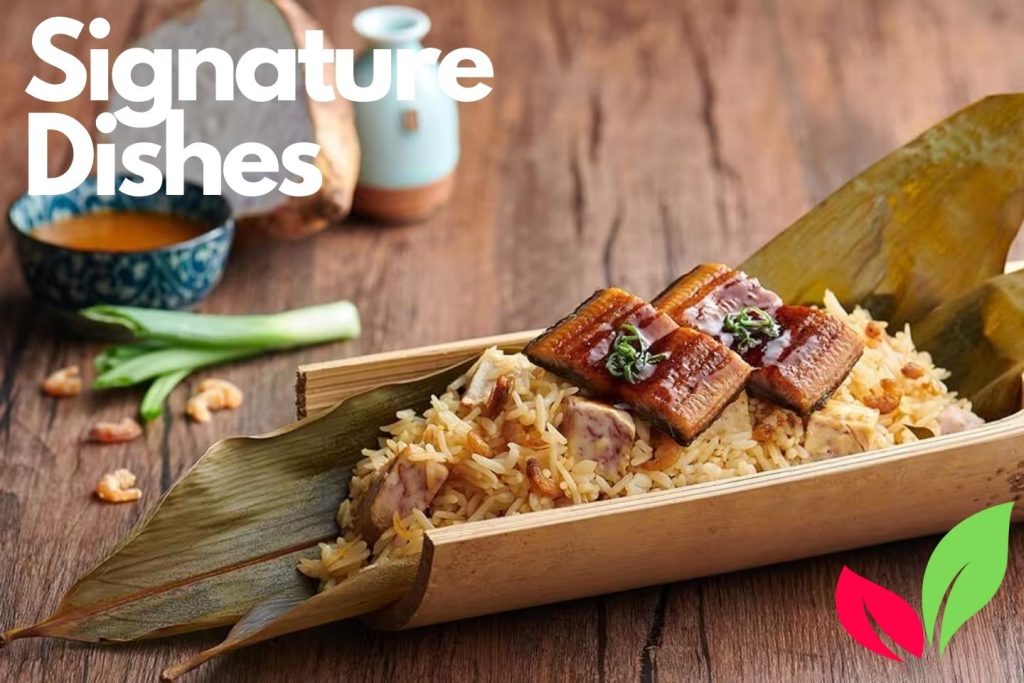
The Sustainable Appeal of Bamboo Rice
Beyond its alluring taste and texture, bamboo rice farming resonates with many small-scale producers because of its ecological advantages. By sourcing fertility from a rapidly renewable resource in bamboo, dependence on synthetic fertilizers is reduced. The integrated system sustains long-term productivity.
Sustainable Agriculture
- Bamboo rice paddies receive the majority of their nitrogen fertility needs from decomposing bamboo biomass instead of fossil fuel-derived fertilizer.
- This supports a healthy, natural nitrogen cycle without pollution impacts from fertilizer manufacturing and excess runoff.
- With bamboo as a fertilizer factory, farmers avoid getting caught on the treadmill of ever-increasing synthetic fertilizer applications.
Soil Conservation
- The bamboo groves adjacent to rice paddies help reduce soil erosion and landslides on slopes.
- Bamboo’s extensive root network stabilizes soils.
- Fallen leaves and other organic debris from bamboo accumulates over seasons to build soil organic matter.
Reduced Chemical Inputs
- The constant input of new bamboo biomass aids weed and pest control through cultural practices, thereby minimizing reliance on pesticides.
- For example, a thick layer of bamboo mulch can suppress weeds. And greater biodiversity found in bamboo groves increases beneficial insects to manage pests.
In essence, bamboo rice ecosystems sustain long-term fertility and plant and animal diversity in harmony with nature’s rhythms.
Also Know About: How to Grow Lima Bean Plant In Your Organic Vegetable Garden
Bamboo Rice Production and Trade
While still a niche crop, bamboo rice sustains smallholder farmers in Asia and offers untapped potential in global specialty markets.
Major Producing Regions
Four major areas lead global bamboo rice output:
- Fujian province in southeast China is considered the birthplace of this rice and still dominates production. Abundant local bamboo forests provide fertilizer to nourish fields.
- Thailand has emerged as a major producer, especially in northern and northeastern rural areas where rice is a dietary staple. Ideal climate helps Thai farms specialize in this rice.
- The mountainous highlands of Taiwan offer excellent terrain and rainfall patterns tailored to integrated rice-bamboo systems. Many farms have supplied local markets for generations.
- The Philippines generates premium organic bambo rice among the legendary Ifugao Rice Terraces where heirs of the rice-bamboo agricultural tradition refine their practices.

Yields and Economics
Per acre yields of bamboo rice are typically 25-50% lower than modern high-input rice varieties. But periodic famines are minimized through ecological resilience. Lower expenditures on purchased fertilizer coupled with premium prices for the specialty rice can make this rice more profitable per unit for smallholder farmers.
For example, organic bamboo rice sells for two to three times the price of conventional rice in retail and export markets. Value-added products like the rice flour. Which also enhance farm income potential.
International Trade
Currently, most of this rice is still consumed in Asian producer countries due to limited volumes. But interest is growing internationally. Specialty food importers, Asian grocery stores, and restaurants in Europe, Australia, and North America represent prime targets to expand exports of this heirloom grain. Organic certification opens doors for exports to new health-conscious consumers willing to pay top dollar for sustainable “green” bamboo rice.
Also Know About: Malabar Spinach
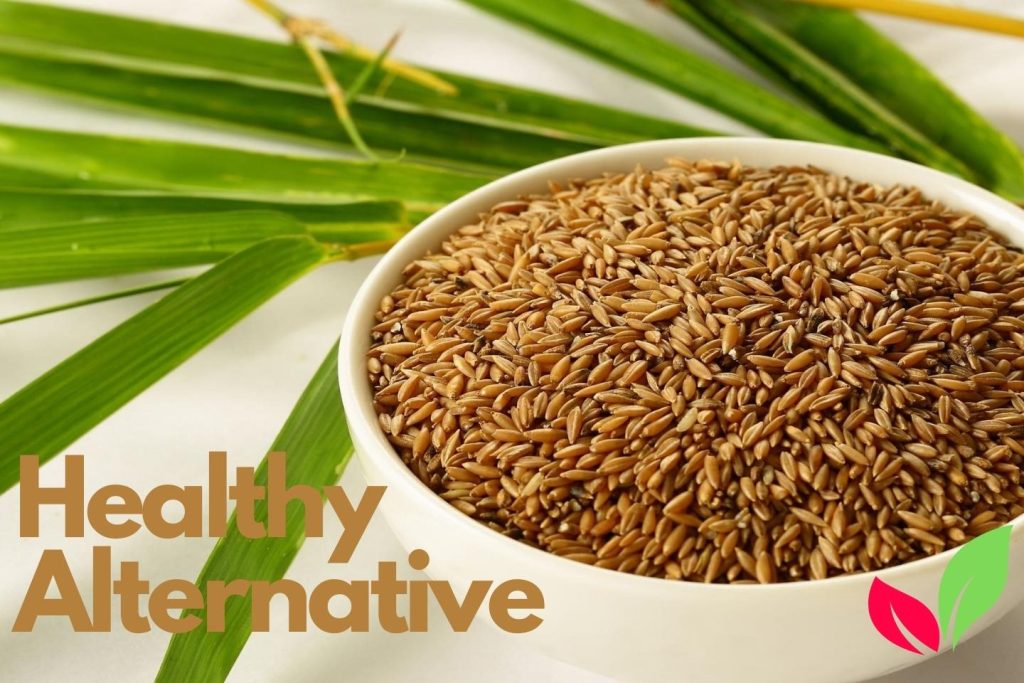
Conclusion
Bamboo rice reflects centuries of farmers synchronizing bamboo’s vibrant growth with rice paddies through sustainable design. The symbiotic system produces nutritious, aromatic grains while nurturing the land. Bamboo rice offers a healthful alternative to mainstream white rice while preserving food culture. With care and creativity, the future looks promising for bambo rice to progress from revered heirloom to redistributed global specialty.

